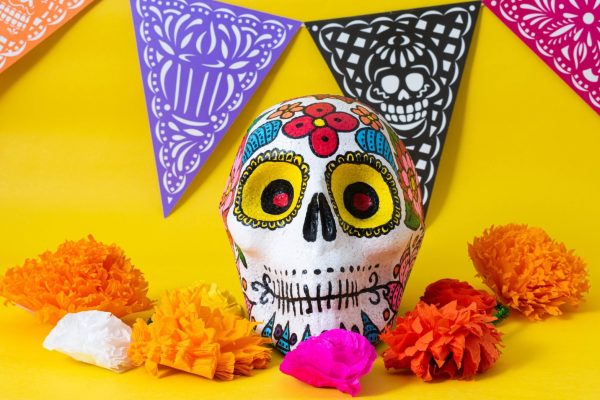Celebrating Día de los Muertos
Día de los Muertos, or Day of the Dead, is a vibrant Mexican celebration that transcends the boundary between life and death. This profound cultural tradition, now celebrated in many countries, honors departed loved ones through a festive blend of indigenous Aztec rituals and Catholic traditions. Observed on November 1st (Día de los Inocentes, honoring children) and November 2nd (Día de los Difuntos, remembering adults), the holiday transforms mourning into a joyous celebration of life and remembrance.
At the heart of these celebrations are the “ofrendas” – meticulously crafted altars that serve as bridges between the world of the living and the deceased. Each ofrenda tells a story through carefully chosen elements: cherished photographs, pan de muerto (traditional bread), favorite dishes of the departed, and personal mementos. The iconic cempasúchil (Mexican marigold) flowers create brilliant orange pathways, their pungent scent believed to guide spirits back to their families. Alongside these flowers, the gentle flicker of candles illuminates the way for returning souls.
Calaveras de azúcar (sugar skulls) embody the holiday’s distinctive blend of whimsy and reverence. These intricately decorated skulls, each bearing the name of a departed soul on its forehead, represent the sweetness of life and the acceptance of death as part of our journey. Their vibrant colors and intricate designs challenge the somber Western perception of death, presenting it instead as a natural continuation of life’s cycle.
The art of papel picado adds another layer of cultural richness to the celebrations. These delicate tissue paper cutouts dance in the breeze, their intricate designs depicting skulls, flowers, and traditional symbols. When strung together, they create colorful banners that symbolize the fragility of life and the connection between earth and sky. The process of creating papel picado brings families together, as patterns are carefully cut to produce these ephemeral works of art.
Beyond the home, Día de los Muertos transforms cemeteries into spaces of celebration. Families gather to clean and decorate graves with marigolds, candles, and offerings. The air fills with the smell of copal incense, traditional music, and the murmur of stories being shared. Unlike the solemnity of many cultural practices surrounding death, these cemetery visits resemble family reunions, where multiple generations gather to share memories, food, and music with both the living and the dead.
This profound celebration teaches us that remembrance can be an act of joy. Through its rich traditions, Día de los Muertos helps us embrace the cyclical nature of existence and find beauty in honoring those who came before us. It reminds us that as long as we keep their memories alive through story, tradition, and celebration, our loved ones are never truly gone.
For more information on Dia de los Muertos please visit History.com.


